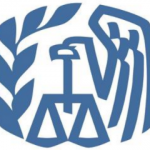7 Changes to Information Returns, Extensions and Penalties for 2017
 For tax returns due in 2017 that are reporting 2016 information, several IRS due date changes have been made. January will be here before you know it, and there are some important modifications to certain information returns which will impact businesses required to file them. The sooner that you become acquainted with these tax form updates, the easier your tax filing responsibilities will become. What follows is a list of important changes you need to know.
For tax returns due in 2017 that are reporting 2016 information, several IRS due date changes have been made. January will be here before you know it, and there are some important modifications to certain information returns which will impact businesses required to file them. The sooner that you become acquainted with these tax form updates, the easier your tax filing responsibilities will become. What follows is a list of important changes you need to know.
Specific Changes to Information Return Filing Forms
Form W-2
As most businesses have employees, you must provide those employees with their Form W-2 by the latter part of January. What has changed about this process, however, is that you now must transmit copies, along with Form W-3, to the Social Security Administration by the same date, January 31, 2017. In previous tax filing years, the transmittals were not due until the end of February if sending paper filing forms or by the end of March if you are transmitting these forms electronically. The IRS made these new changes to try and prevent tax refund fraud claims by enabling them to match information better. You can learn more details about these changes and general instructions to using W-2 and W-3 IRS PDF
Form 1099-MISC
If your company uses or hires independent contractors, then you need know about this change. The same dates for furnishing forms to workers and transmitting them to the IRS apply to Form 1099-MISC, with a slight variation. If you fill in Box 7 on Form 1099-MISC, which is used for reporting non-employee compensation (referred to in IRS government shorthand as 1099-MISC NEC), then you must follow the W-2 dates that covered earlier for submission. The main difference: Instead of transmitting forms to the Social Security Administration, transmittals of 1099-MISC, along with Form 1096, are sent to the IRS.
If your business completes Form 1099-MISC to report other types of income, such as rent or royalties, the old deadlines (February 28, 2017, for paper returns, and March 31, 2017, for transmitting forms electronically) for transmission continue to apply. You can find more details in the IRS instructions page to using Form 1099-MISC.
Forms 1099 DIV
Last year the Form 1099 DIV, which is used reporting dividends, capital gain distribution, interest and stock sales was not due until March 15th, it now has been changed by the IRS, and the new due date is Feb 15, 2017. You find more filing instructions from this IRS Form 1099 DIV pdf.
Forms 1065, 1120 and 1041
Partnership information return (Form 1065) has been changed, last year it was due on April 15th, and it is now due a month earlier on March 15th, 2017. To learn more check out the special IRS instructions Form 1065 PDF. The due dates for C-Corporations (Form 1120) were pushed back a month from March 15 to April 15. The income for trusts and estates Form 1041 due date is April 15th, 2017. Here is an extensive instructions list for Form 1041.
Forms 1095-B and 1095-C
If your company that has 50 or more full-time workers on it’s payroll, then you may be classified as an applicable, large employer or ALE. So in 2016 you now are required to provide employees with Form 1095-C by January 31, 2017. If you remember that last year this due date got extended to the end of March because this was the first that this information return was introduced and required.
An ALE classified business must furnish employees with this form, even your company has opted out of offering health coverage and decides to instead pay the tax penalty under the Obamacare Affordable Care Act employers mandate.
Now even if you have less that 50 employees and are not considered an ALE company, you are required to complete Form 1095-B if you have a self-insured coverage plan, like a health reimbursement arrangement. If you are not an ALE and only have insurance coverage, then the insurer will send your employees the form instead.
So the transmittal dates for copies of the 1095s, as with Form 1094-B or Form 1094-C, are also new. Now last year, employers had the luxury of waiting until the end of May to send snail mail paper form copies to the IRS or transmit them electronically by the end of June. This year, the due dates have gone back to being the same date as with most other information returns: February 28, 2017, for electronic filing. To learn more check this IRS instructions PDF for transmittals and filing these forms.
Extensions
Ok, so the IRS does not give employers any extensions for providing their employees with their information returns. But if you need more time to actually transmit information returns to the IRS, you will have to request it from them. You can accomplish that using Form 8809, which has been updated for use in the 2017 filing tax season.
In general, you usually obtain an automatic 30-day extension pretty easily. If you happen to more time than that, there are no additional automatic extensions so you’ll make a special request. You will have to submit a 2nd Form 8809 with an explanation of what were the complications or extenuating circumstances that prevented you from filing by the normal due date.
Form W-2 does not have any automatic extensions. Your only option is the try for a possible 30-day non-automatic extension. It is rare and is only granted under catastrophe or extraordinary circumstances like a freak accident or fire burning down an employer’s building and records.
Penalties
The amount of penalties you may end up owing for filing late or wrong information returns depends on when you correct the issue. The penalty is assessed per form, and there is a maximum penalty.
- If you correct the problem on or before 30 days after the required date: $50 per form
- If you correct the problem after the 30th day but no later than August 1: $100 per form
- If you correct the problem after August 1: $260 per form
Keep in mind, that while these basic IRS penalty amounts are unchanged amounts that applied last year, the caps on these penalties have however been adjusted to account for inflation. And if you are a small business, which are defined by the IRS as having had gross receipts of $5,000,000 or less for the last 3 years, have a smaller penalty cap than large businesses.
Conclusion
Thomas Huckabee CPA, is here to help companies make sure that they are informed and up to date with all the new tax filing changes for 2017. So make sure you know who is responsible for filling out each information filing return: your accountant, a payroll company, or inhouse, etc. One last thing to note, a company that is 250 or more information returns – 1099, W-2, 1095- during this year must transmit the information now electronically only. If you have any questions about these new due dates and the impact on your tax filings, please contact Tom Huckabee CPA tax office at (858) 945-5510









